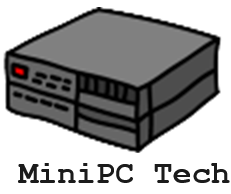You might not realize that Raspberry Pi can power a range of efficient web servers, making it a versatile choice for both hobbyists and developers. Each of the top five servers—Apache, Nginx, Lighttpd, Caddy, and Flask—comes with its own set of features designed to meet different needs. So, if you’re considering which one suits your project best, let’s explore the unique advantages each of these top Raspberry Pi web servers offers.
Key Takeaways
- Apache Web Server: Highly flexible with extensive features, ideal for customization and security in handling sensitive data on Raspberry Pi.
- Nginx Web Server: Lightweight and efficient, capable of handling thousands of connections with robust security measures suitable for personal and business use.
- Lighttpd Web Server: Balances performance and resource consumption, delivering impressive speed with built-in security against attacks, perfect for low-powered devices.
- Caddy Web Server: Simplifies server management with automatic HTTPS and easy configuration, while maintaining low resource usage and supporting plugins for added functionality.
- Flask Web Server: A lightweight framework for building web applications, offering quick route definitions and straightforward deployment without unnecessary complexity.
Choosing the Right Raspberry Pi for Your Web Server
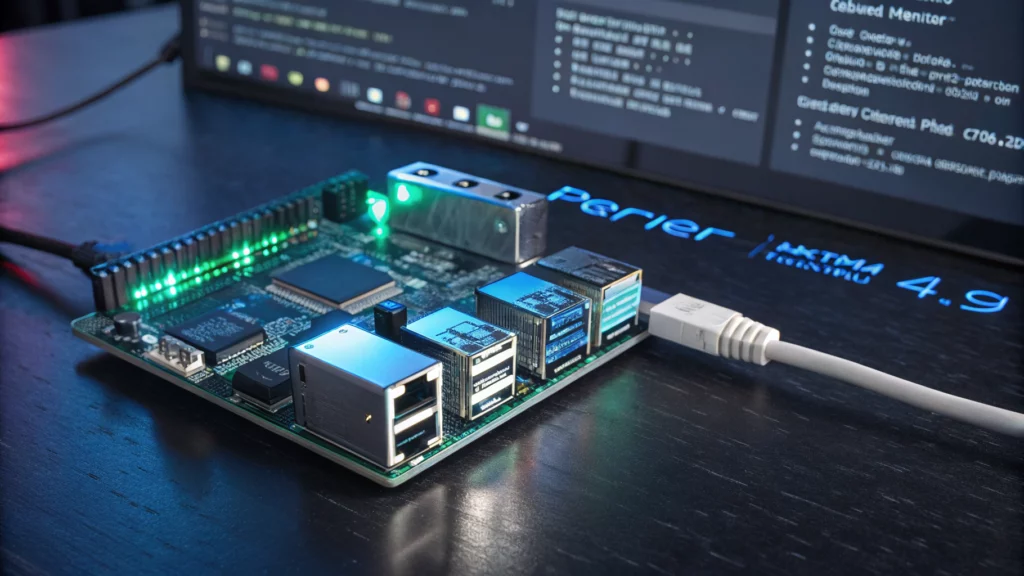
When setting up one of these top Raspberry Pi web servers, selecting the appropriate Raspberry Pi model is crucial for optimal performance. The Raspberry Pi 4 stands out as the premier choice, with its quad-core processor and multiple RAM options (2GB, 4GB, or 8GB) providing excellent processing capability for web hosting tasks. For a web server, the Raspberry Pi 4 offers significant performance improvements over older models, with increased RAM and processing power ensuring smoother operation and efficiency for your projects.
Consider your server’s expected traffic and complexity when making your selection. For lightweight servers running Lighttpd or Caddy with minimal traffic, even a Raspberry Pi 3B+ might suffice. However, for more demanding setups using Apache or hosting multiple applications, invest in a Raspberry Pi 4 with at least 4GB RAM.
Don’t overlook cooling solutions—web servers often run continuously, so proper ventilation or heatsinks are essential. Additionally, use a high-quality microSD card (Class 10 or better) or consider USB boot with an SSD for improved reliability and speed. Finally, ensure stable power with a quality 3A power supply to prevent performance issues during peak loads.
Apache Web Server
When it comes to setting up a Raspberry Pi web server, Apache is often the go-to choice for many users. Its flexibility and extensive features make it incredibly appealing.
You’ll want to start with a solid Apache configuration to tailor the server to your needs. This includes setting up virtual hosts, enabling necessary modules, and optimizing performance for your applications.
While you’re configuring, don’t overlook Apache security. Securing your server helps protect sensitive data and guarantees smooth operation.
Don’t forget to prioritize Apache security; it safeguards sensitive information and ensures optimal server performance.
You should implement best practices like disabling directory listing, using strong passwords, and keeping your software up to date.
With the right approach to Apache configuration and security, you’ll create a robust web server that stands the test of time on your Raspberry Pi.
The Nginx Web Server
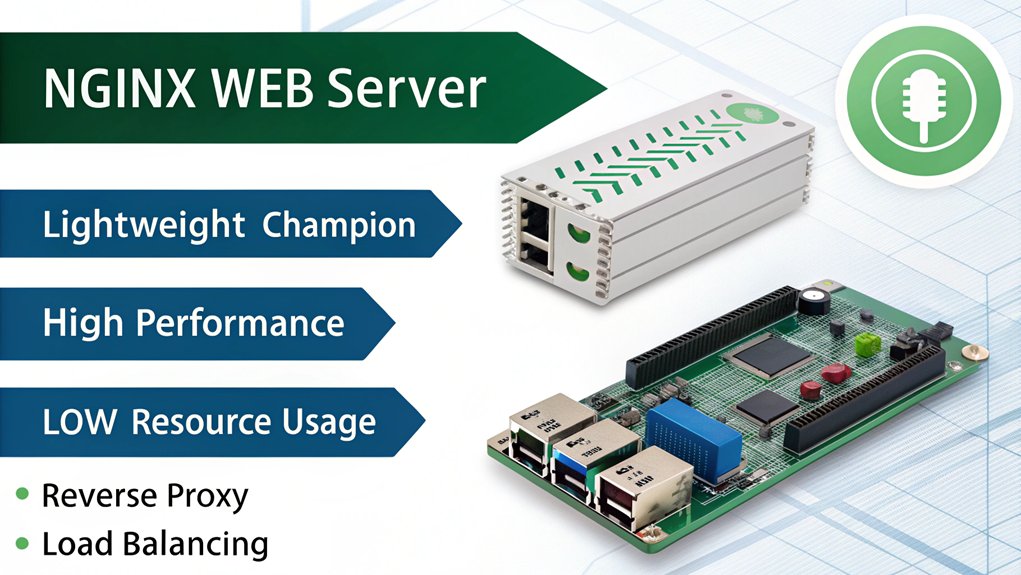
Nginx is a powerful alternative to Apache that’s rapidly gaining popularity among Raspberry Pi users. Known for its lightweight architecture, it excels in handling high loads with impressive efficiency.
If you’re all about nginx performance tuning, you’ll appreciate its asynchronous event-driven approach, allowing you to serve thousands of simultaneous connections with minimal resource consumption.
Additionally, its robust nginx security features provide essential protections, including built-in support for SSL/TLS and configurable access control. You can easily implement advanced configurations to protect your web applications from common vulnerabilities.
Whether you’re hosting personal projects or developing business solutions, embracing Nginx is a fantastic way to enhance your Raspberry Pi server capabilities while optimizing performance and security.
Lighttpd Web Server

Lighttpd stands out as an efficient web server option for Raspberry Pi enthusiasts looking to balance performance with resource consumption.
With its lightweight architecture, it’s perfect for low-powered devices while delivering impressive speed.
Here are three key features to take into account:
- Lighttpd performance optimization: It handles high loads seamlessly, making it suitable for busy websites.
- Lighttpd security features: Built-in protection against various attacks like DoS and DDoS guarantees your server remains secure.
- Simple configuration: The straightforward setup process makes it accessible for both beginners and seasoned developers.
Caddy Web Server
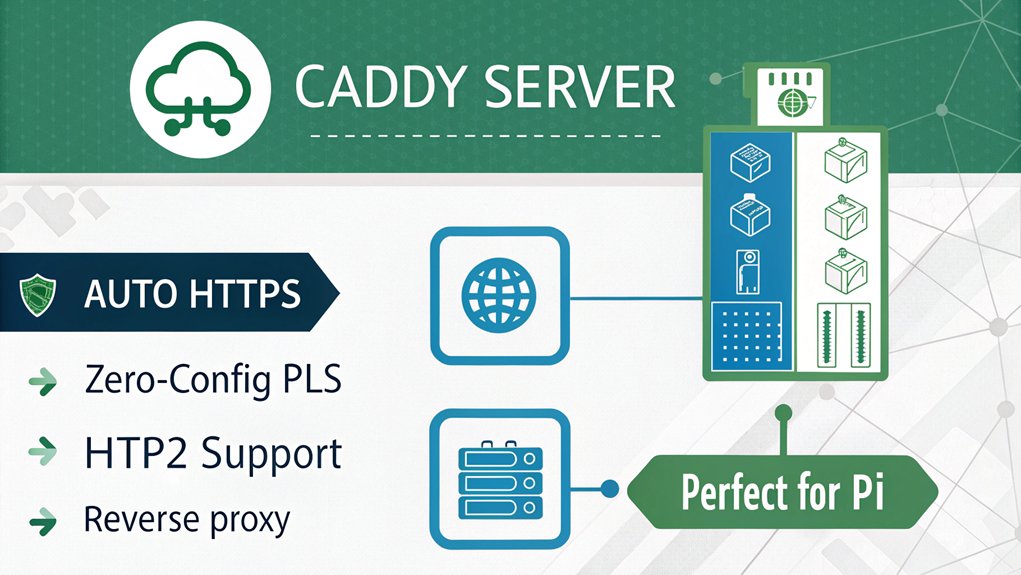
Caddy Web Server is a top choice for those seeking simplicity and modern features in their Raspberry Pi projects. With its automatic HTTPS and easy configuration, Caddy enhances your web experience without complicated setups.
| Caddy Features | Caddy Performance |
|---|---|
| Automatic HTTPS | Lightning-fast response time |
| Easy to set up and configure | Low resource consumption |
| Supports plugins | Scales effortlessly |
Flask Web Server
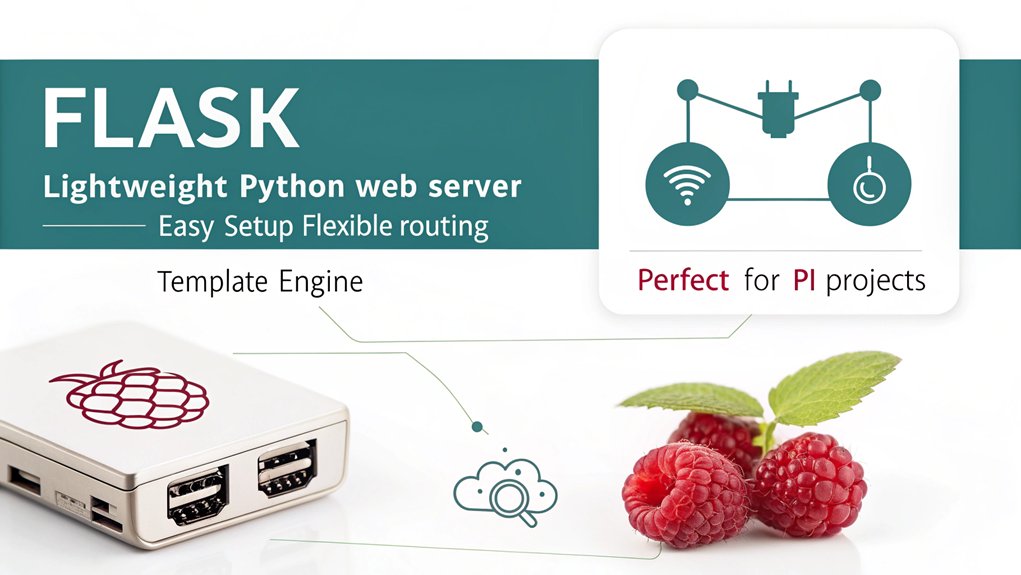
If you’re looking to build web applications on your Raspberry Pi, the Flask web server is an excellent choice because it offers flexibility and simplicity.
Here are three key reasons to reflect on Flask:
- Flask Routing: It allows for easy definition of routes, making your web app navigation intuitive and straightforward.
- Lightweight Framework: Flask’s minimalistic design means it won’t weigh down your resources, perfect for the Raspberry Pi.
- Flask Deployment: Deploying your application is a breeze, with extensive documentation guiding you through the process.
With Flask, you can create powerful applications without unnecessary complexity, making it a favorite among developers who appreciate innovation.
Immerse yourself in your project and see how Flask enhances your Raspberry Pi experience!
Frequently Asked Questions
Can I Use Multiple Web Servers on One Raspberry Pi?
Yes, you can run multiple web servers on one Raspberry Pi using various server configurations. By implementing effective resource allocation strategies, you’ll optimize performance and guarantee stability while maximizing your innovative projects’ capabilities.
What Projects Can I Host With a Raspberry Pi Web Server?
Raspberry Pi projects bring possibilities! You can host web server applications, create enchanting websites, enable media streaming, or control home automation systems—all from your Pi. Just plunge into innovation and start creating your digital dream!
How Much Power Does a Raspberry Pi Web Server Consume?
A Raspberry Pi web server typically consumes around 5 to 15 watts, showcasing excellent energy efficiency. By implementing effective power management practices, you can further reduce energy use while effectively hosting your innovative projects.
What’s the Best Raspberry Pi Model for a Web Server?
For a web server, you can’t beat the Raspberry Pi 4. Its performance comparison shows significant improvements over older models, and the specifications, including increased RAM and processing power, guarantee smoother operation and efficiency for your projects.
Can I Access My Raspberry Pi Web Server Remotely?
Yes, you can access your Raspberry Pi web server remotely. Just set up remote access tools while ensuring web server security features are enabled to protect your data and maintain a secure connection.
Can you Build Your Own Raspberry Pi Web Server?
When it comes to these top Raspberry Pi web servers, each option offers something unique to meet your needs. Did you know that Nginx can handle over 10,000 concurrent connections on a single server? This impressive capability makes it a top choice for high-traffic scenarios. With Apache’s rich features, Lighttpd’s efficient resource use, Caddy’s hassle-free HTTPS setup, and Flask’s lightweight framework for apps, you’ll surely find the perfect fit for your project. Explore these options to elevate your web development experience!

I am a retired software engineer with experience in a multitude of areas including managing AWS and VMWare development environments. I bought a relative a mini-PC a year ago and have become passionate about the technology and its potential to change how we deploy software.
